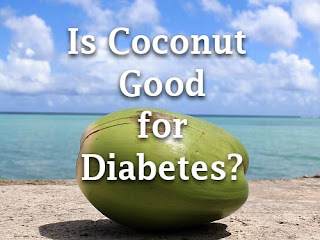Antibiotic Addiction vs Antibiotic Resistance
Whether it’s
cold or body ache, lack of time to be sick, urges majority of patients to
demand for antibiotics. Worldwide use of antibiotics in humans has soared to 39
percent since 2000. Despite of the known fact that antibiotics do not cure
viral infections doctors still write the drugs unnecessarily for ailments they
cannot treat. This has led to the evolution of drug resistant bacteria and has
also raised the addiction to antibiotics.
“For some reason, faith in the body’s natural ability to heal itself has
waned and everyone believes that an antibiotic is the only possible cure that
could help.”
Dr. Anna Julien
Antibiotic resistance is an emerging threat to the globe and has been aggravated by
smooth availability of drugs with pronounced growth in β-lactam antibacterial.
These are easily accessible globally through prescriptions written by
non-allopathic doctors as well as outdated prescriptions. A study at PGIMER,
Chandigarh, India analyzed more than 1000 prescriptions from patients receiving
antimicrobial drugs (in the absence of any microbiological data) in the
departments of pediatrics, urology, surgery and internal medicine among which
amikacins and ciprofloxacin were the most common. Also practices like
dispensing of antibiotics without prescriptions or irrational prescriptions and
quacks or unlicensed traditional healers writing antibiotics have also enhanced
the resistance in microbes.
Many schemes
started across the world in order to distribute most commonly used drugs
(antibiotics containing salts such as ciprofloxacin, cephalosporin,
tetracycline and penicillin) free of cost to all patients visiting government
hospitals has been more disastrous than beneficial. Such schemes not only made
the drug availability easier but also have elevated the cases of
self-medication. Unknowingly people medicate themselves with incorrect doses
and then dispose the leftovers in soil and water thereby introducing the native
pathogenic microbes to the drugs and enhancing the resistance in them.
According to a
survey conducted by International Nosocomial Infection Control Consortium in 7
hospitals of 7 cities of India which included 10,835 patients (2004-2007) found
that out of 476 nosocomial infections observed 46% were caused by Enterobacteriaceae, 27%
were caused by Pseudomonas spp., 8% were caused by Candida
spp., 6% were caused by Acinetobacter, and 3% were
caused by Staphylococcus aureus. Of this majority of causal
organisms showed resistance to the antibiotics obviously prescribed in such
cases such as ciprofloxacin, Ampicillin, second and third generation
cephalosporin and penicillin respectively.
A study at CMC,
Vellore isolated 1382 strains of S.aureus out of which 24%
were Methicillin Resistant S.aureus (MRSA). Among the MRSA strains,
resistance to ciprofloxacin, gentamycin was higher than 75% and resistance to
ofloxacin and amikacin was above 25 %.
The IBIS
(Invasive Bacterial Infection Surveillance) Project has reported resistance
of Streptococcus pneumonia to penicillin and that of Haemophillus
influenza to chloramphenicol and erythromycin followed an upward
trend. Each time the pathogenic microorganisms encounter antibiotics in humans,
animals and their surroundings they have greater opportunities to devise
methods to create enzymes to resist antibiotics.
“If we lose our antibiotics we will lose not only the treatment of
primary infection but the treatment of infections that complicate many other
conditions “
Dr. Tom Frieden, Director, Centre for Disease Control and Prevention,
U.S.A.
Loss
of effective antibiotics is driven in large part by antibiotic
consumption, most of which is inappropriate and does nothing to improve
health. The excessive
consumption of antibiotics has been linked to a higher incidence of asthma,
eczema and allergic hypersensitivity. Many-a-times the incentives provided by
pharmaceutical companies to doctors and chemists force them to administer
specific antibiotics to patients. Medical representatives may also promote one
drug over another due to reasons other than health benefits (higher commission
or incentives by branded pharmacies).
Currently, the
availability of the drug, Bedaquiline, at select government-run
health care centers in Delhi, Chennai, Mumbai and Guwahati has
emerged as a breakthrough for patients suffering from XDR-TB(extensively drug
resistant –tuberculosis). This invention will act as a savior not only for
1000’s of XDR-TB and pre-XDR-TB survivors but also prove beneficial for MDR-TB
(multi drug resistant-tuberculosis) patients depending upon its procurement.
Access to the new drug will be conditional and highly under control to monitor
its dispension and curtail the misuse of the same. Looking at this, it’s
certain to know that
“Preservation of current antibiotics is less costly than discovering new
ones.”
The above data
focuses majorly on the present scenario of antibiotics use and its resistance
in India. This requires the need for governmental and
non-governmental interventions to curb the emergence and spread of the same.
Hence a few means have been devised to do so such as:
- · Vaccines for antibiotic treatable diseases
- · Universal immunization program
- · Infection control intervention
- · Educational intervention
- · Changes in prescribing practices
These approaches only along with our
intelligence and awareness can save us from any further detrimental
repercussions. As it’s rightly said;
“Prevention is better than cure.”








Comments
Post a Comment